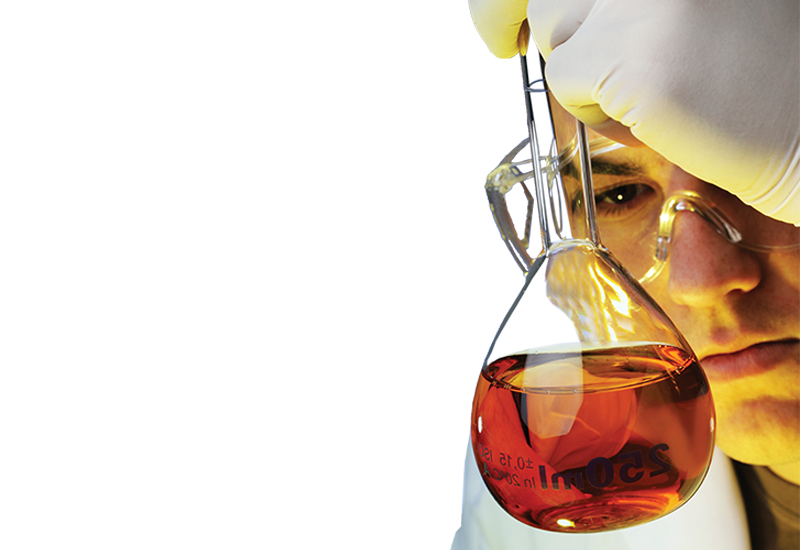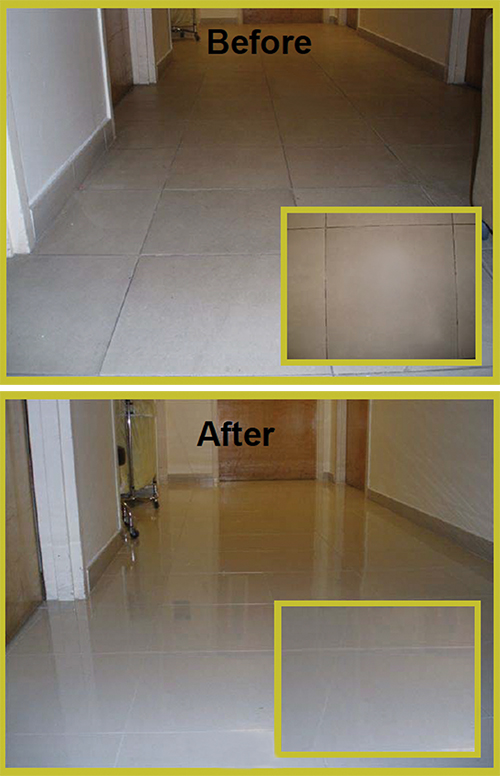
Coatings Preserve Metal, Stone, Tile, and Concrete
NASA Technology
As numerous achievements have taken place in space over the last 50-plus years, a number of innovations have simultaneously taken place on the ground. For example, Jack Triolo, a senior engineer at NASA’s Goddard Space Flight Center, worked with John B. Schutt, a chemist extraordinaire and coatings specialist at Goddard from the 1960s through the 1990s. Schutt spent considerable time experimenting with formulas to create super-durable coatings for spacecraft.
“My job was to fly different coatings in space,” says Triolo, “and while some of John’s coatings didn’t work out so well, some of them were really great.”
In particular, one of Schutt’s more impressive mixtures was a specific inorganic formula made from potassium silicate and zinc. Not only could the concoction keep corrosion from forming on the steel or metal surfaces it was applied to, but it dried quickly to a hard, durable finish. With just one coat, the technology delivered corrosion resistance and could withstand extremely high temperatures.
“Many chemists were doing something similar at the time, but they approached the combination in different ways,” says Triolo.
The magic in Schutt’s formula came from having just the right amount of potassium silicate and zinc so that it would chemically combine with metal. “It became electrically conductive,” says Triolo. “The zinc was electrically connected through the potassium silicate to the steel or the metal it was protecting.”
Though the coating was never used in space, it proved useful here on Earth at Kennedy Space Center, where it protected the launch facilities from degradation due to corrosion from the salty, tropical environment and heat from the fiery rocket launches. But that is not the only place the coating found a home.
Technology Transfer
NASA patented Schutt’s formula and then granted a license to a private company, which supplied the technology for use on bridges, pipelines, power stations, and more (Spinoff 1984, 1985, and 1990). One of the most memorable applications was on the interior of the Statue of Liberty.
Because the potassium silicate zinc formula provides long-lasting protection with a single application, it has enabled significant material and labor cost savings wherever it is used. In 1995, the innovation was inducted into the Space Technology Hall of Fame.
Meanwhile, Schutt retired from NASA in the 1990s and later began employing his NASA expertise to create new hybrids of the inorganic formulation for Daytona Beach, Florida-based Adsil Corporation.
Jim Gibson, the director of business development at Adsil, says, “We wanted to protect metal from corrosion, and Schutt developed formulas that worked in the real world. They were optimized so they were easy to use and affordable.”
Years later, Adsil now holds several patents related to inorganic, siloxane coatings that are being used to protect metal and other types of materials in a variety of environments. Sadly, Schutt passed away in 2011; his formulations, however, continue to bring benefits to businesses and individuals around the globe.
Benefits
Adsil manufactures and markets a family of coating formulations to preserve, prolong, and protect a range of surfaces. Trademarked as MicroGuard, there are products for anti-graffiti; anti-skid; heating, ventilation, and air conditioning (HVAC) and refrigeration applications; corrosion protection; and concrete or tile surface sealing.
As a testament to its value, MicroGuard has been used at hotels, banks, restaurants, schools, spas, retail stores, marinas, amusement parks, museums, power plants, water plants, on outdoor sculptures, and in sports stadiums.
Because MicroGuard can endure extremely high temperatures, the company’s first commercial application was on welding tips. “Once it was on the welding tip, the slag from the welding process could be cleaned off easier,” says Gibson. “From there, we went to air conditioning units and then to floor tile.”
MicroGuard has proven particularly valuable for HVAC and refrigeration equipment, not only because it repels dust and dirt and reduces maintenance costs by approximately 13 percent, but because laboratory tests have shown that it completely inhibits the growth of mold, increases the energy efficiency up to 12 percent, and protects against corrosion even in the harshest of environments.
“It stays clean, and the metal can transfer heat without interference from dirt,” says Gibson.
Another area where MicroGuard is beneficial is on floors made of grout, concrete, or tile. According to Gibson, the coating will last for years and treated surfaces will not support germs, are resistant to stains, and can be cleaned more easily. Due to benefits such as these, a popular use of MicroGuard has been in public rest stations and in hospital restroom facilities. For the University of Florida, MicroGuard coatings have reduced cleaning costs by 30 percent.
An added benefit of MicroGuard is its resistance to paints and inks. “We don’t have a surface that graffiti can bite into. The coating, in essence, is just sitting on the surface. You can wipe graffiti off using a green solvent remover or a pressure washer,” says Gibson.
MicroGuard also finds many uses on aluminum, brass, bronze, copper, and stainless-steel alloys to inhibit corrosion. For example, it has been applied on handrails and light poles in public parks in New York as well as in the Cayman Islands, where salty conditions wear away metal.
The coating also provides slip resistance, as has been shown in testing, and has been widely used on the floors of kitchens and medical facilities for such purposes. In fact, MicroGuard was applied to the floors in the water-attraction areas of Walt Disney World in 2011, and on exterior walkways and multiple bathrooms throughout Disney’s All-Star Cafe and Disney’s Contemporary Resort.
Even though Adsil’s coating is not the only solution on the market, Gibson says the MicroGuard formulation stands out from others because of the way the film forms. “The molecules link together like a basket weave,” he says. “It forms the film and makes it durable without any holes. It’s not a solution that sinks in and dries. It’s a film and it lasts a long time.”
With 84 installers of MicroGuard across the United States, in Mexico, Asia, Brazil, Columbia, Spain, Canada, and India, Gibson says, “We wouldn’t be doing this if it weren’t for NASA. There’s a total of about 150 people who are making a good living thanks to NASA.”
MicroGuard® is a registered trademark of Adsil Corporation.

The tile floors of a hospital in Miami, Florida, are shown before and after being coated with Adsil Corporation’s MicroGuard Clear Treatment System. According to Adsil, the coating will lessen the maintenance of the floors and improve the floors’ appearance. Adsil’s coatings are derived from John B. Schutt’s work at Goddard Space Flight Center on durable coatings for spacecraft.

Scientist with formulation













